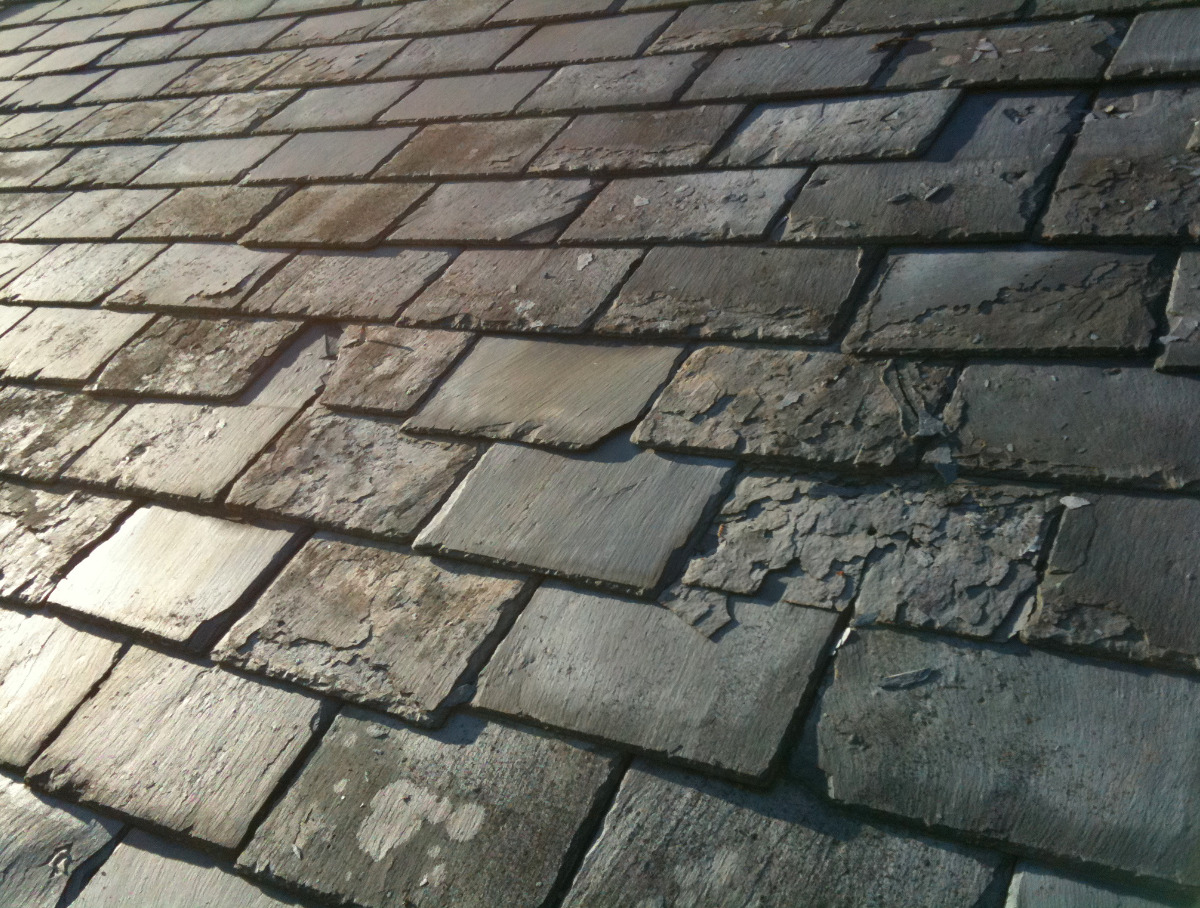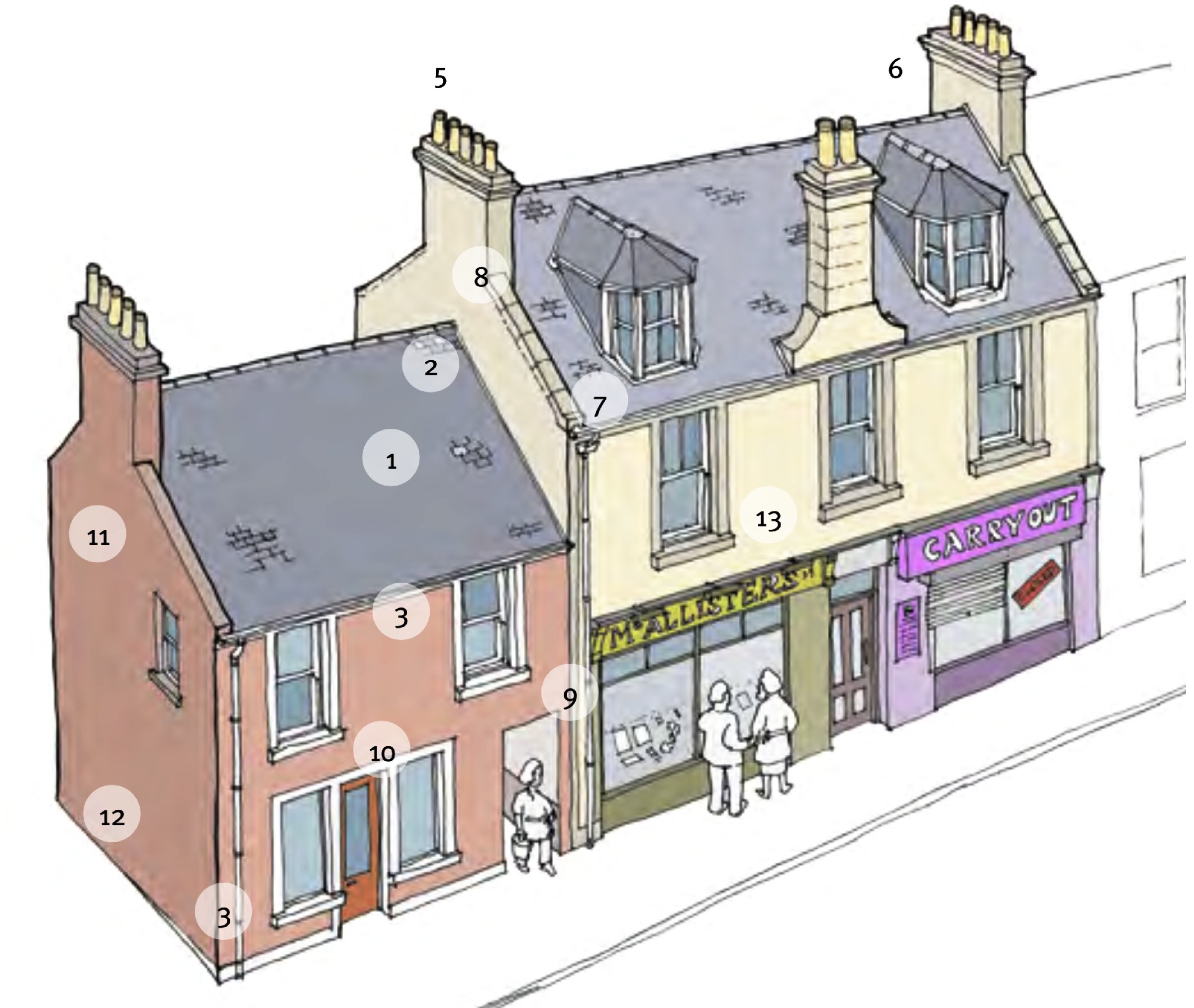- Home
- Scotland's changing climate
- Urban Housing in Scotland
- Maintenance
- Ventilation
- Airtightness
- Insulation
- Lofts - insulation at ceiling level
- Lofts - insulation at rafter level
- Cavity wall insulation
- Solid Walls: Internal vs External Insulation
- Internal Solid Wall Insulation (IWI)
- External Solid Wall Insulation (EWI)
- Timber frame retrofit
- Windows and doors
- Openings in 'historical' buildings
- Openings in 'non-historical' buildings
- Ground floors
- Suspended floors
- Suspended floors - from below
- Suspended floors - from above
- Solid floors
- Insulation materials
- Building science
- Space heating
- Solar energy
- Product Selector
Maintenance: Roofs
The roofscape takes the brunt of the weather, so it is the area where maintenance is most important. Being at the top of the building and factoring in gravity, problems with a roof can lead to problems throughout the whole building. As climate change brings more extreme weather, the importance of maintaining a weatherproof roof will only increase.


At roof level, (ideally using binoculars) check:
1 Slates or tiles which may have slipped or been damaged. Sometimes, slates lie in the gutter below, making it easy to see the problem.
2 Various flashings, including the ridge flashing, valleys, parapets and abutments. In some cases, these are formed by cement, which tends to last less than traditional lead or other metal flashings.
3 Dislodged, leaking or overflowing rhones (gutters) and downpipes. Problems are more noticeable when it's raining, while at other times, the giveaway sign is staining on the wall behind. It is also important to check that fixings for gutters and downpipes are adequate.
4 Occasionally, waste pipes will have problems, especially in cold weather where smaller amounts of water freeze and create blockages.
5 Chimneys and chimney pots.
6 Loose or damaged stonework on chimneys or wall copes, which could potentially dislodge and fall.
7 Plant growth anywhere on a roof is a bad sign. Plants tend to hold onto moisture, increasing the risk of other moisture-related problems while roots grow and eventually cause problems as they expand.
Internally, check for damp patches, which could indicate an external problem that isn't otherwise noticeable. It is also important to look in the loft if that is possible. It is possible that water getting in can run from the source of the problem to a low point somewhere else, making problems harder to identify. Where insulation has become soaked or timbers moist, it is important to remove anything wet immediately and set about trying to ventilate the area.
Access to the roof is an issue. If the work is extensive, it is almost certainly best to arrange for scaffolding to allow safe and simple access to the whole area, but of course, there are times when this isn't possible or only possible in some areas. Tower access is sometimes possible if the work is limited in size, and small areas can be accessed by a 'cherry picker', a small guarded platform on a crane lifted into place. In each case, there may be access issues. Another solution, usually best if the work is simple enough, is to access the roof using steeplejacks and other trained climbers. Professional guidance is required, but contractors can advise on the best way forward.